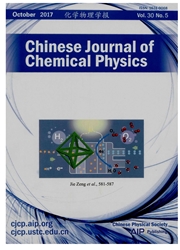

 中文摘要:
中文摘要:
用密度泛函理论计算了12种具有抗肺炎链球菌的氟诺喹酮类药物分子的分子特性.利用主成分分析和分层聚类分析方法来简化氟诺喹酮类药物数据库的维数.主成分分析法表明,变量ELUMO、Q3、Q5、QA、lgP、MR、VOL、△EHL能够有效地对抗肺炎链球菌的氟诺喹酮类药物进行分类.分层聚类方法的结果和主成分分析方法的结果一致.这表明两种方法都能够对新的具有抗肺炎链球菌的氟诺喹酮类药物的分类提供一个可信的规律.利用主成分分析法和分层聚类分析法对其他6个氟诺喹酮类药物分子进行分析,结果都表明有两个药物分子具有较强的抗肺炎链球菌活性,此结果和临床结果相吻合.
 英文摘要:
英文摘要:
Density functional theory (DFT) was used to calculate molecular descriptors (properties) for 12 fluoro-quinolone with anti-S.pneumoniae activity. Principal component analysis (PCA) and hierarchical cluster analysis (HCA) were employed to reduce dimensionality and investigate in which variables should be more effective for classifying fluoroquinolones according to their degree of an-S.pneumoniae activity. The PCA results showed that the variables ELUMO, Q3, Q5, QA, logP, MR, VOL and △EHL of these compounds were responsible for the anti-S.pneumoniae activity. The HCA results were similar to those obtained with PCA.The methodologies of PCA and HCA provide a reliable rule for classifying new fluoroquinolones with antiS.pneumoniae activity. By using the chemometric results, 6 synthetic compounds were analyzed through the PCA and HCA and two of them are proposed as active molecules with anti-S.pneumoniae, which is consistent with the results of clinic experiments.
 同期刊论文项目
同期刊论文项目
 同项目期刊论文
同项目期刊论文
 期刊信息
期刊信息
